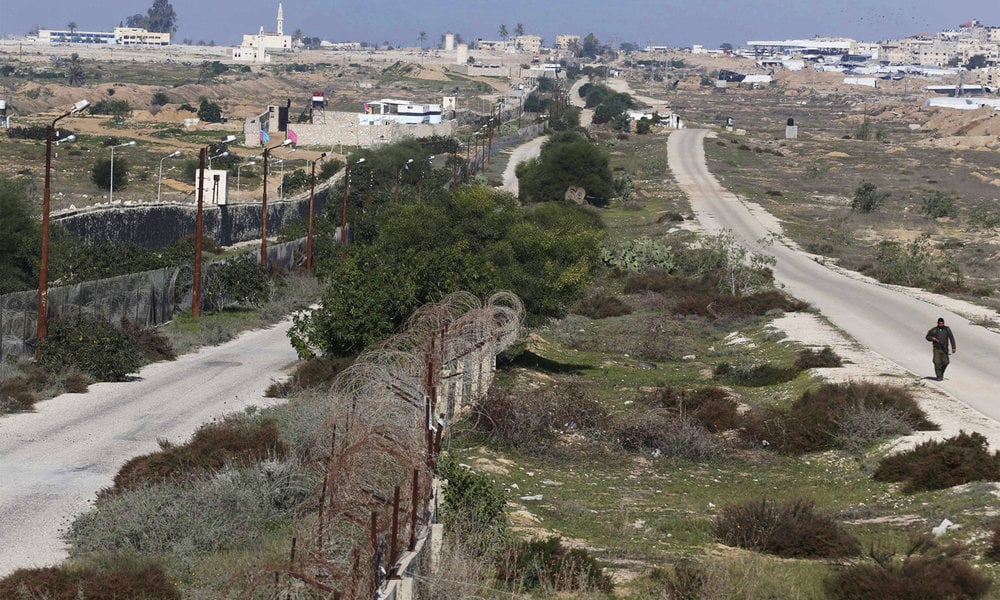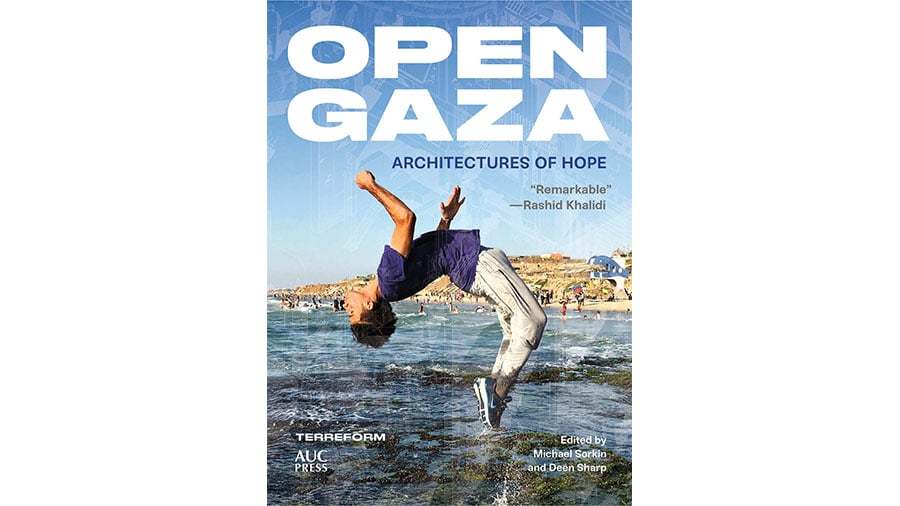
December 4, 2020
Open Gaza Advocates Social and Spatial Justice for the Beleaguered Strip
A new book edited by Michael Sorkin and Deen Sharp offers speculative visions that prioritize the recovery of the people’s agency and humanity.

Spatially speaking, the Gaza Strip is a hyper-dense string of Palestinian cities and refugee camps whose geographic smallness belies its global import. Implicating an international web of geopolitical interests (most saliently those of Israel, which effectively encircles it), it is also the subject of a new volume from Urban Research, the imprint of urban think tank Terreform, founded by the architect and critic Michael Sorkin, who died earlier this year. (One of Sorkin’s last works, the book is dedicated to him.)
Coedited by Sorkin and Deen Sharp, the contributions collated in the book are “surely eclectic,” they write, from architectural accounts of uniquely Gazan typologies to speculative visions of future development trajectories in the beleaguered territory. Gaza’s resilience in the face of abject desperation has long inspired the international community, making it a highly salient crucible in discussions of spatial justice, occasionally to the point of abstraction.
The contributions are pragmatic and savvy; there’s an acknowledgment of the reality of Israeli hegemony but a sharp rejection of its natural basis or inevitability. In one essay, Teddy Cruz and Fonna Forman, who have long examined the U.S.–Mexican border, bring their uniquely binational approach to assess deployed interdependence as the foundation of more cooperative development that can transcend administrative boundaries. A highly visual essay by Palestinian academic and researcher Salem Al Qudwa looks at some of the Strip’s building techniques and materials—for housing, delineating partitions, and even toward an ad hoc form of public art—which must be tailored to the area’s specific needs, planning shortfalls, and imposed limitations.
Privileging “substantive change,” Sharp and Sorkin suggest any “imaginative pitch” for Gaza must prioritize the recovery of its people’s agency and humanity. Oscillating between the poetic and the academic, the historical and the current (the highly corporatist Trump-Kushner plan is panned as “colonial villainy”), Open Gaza promises to be more than just another installment of armchair solutionism for the oft-discussed but rarely aided Strip.
You may also enjoy “Metropolis Gift Guide 2020: Read“
Would you like to comment on this article? Send your thoughts to: [email protected]
Register here for Metropolis’s Think Tank Thursdays and hear what leading firms across North America are thinking and working on today






